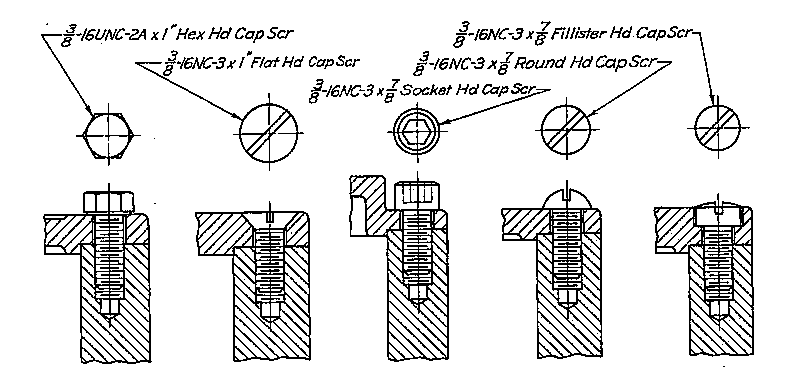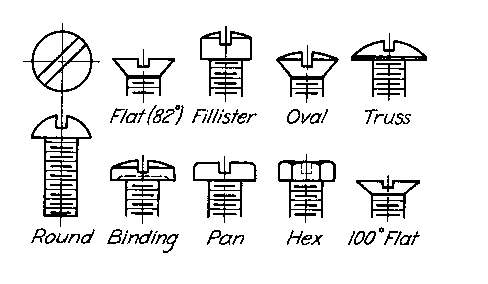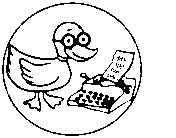Machine Screw
The machine screw is an element of construction, a type of threaded fastener. A machine screw is typically designed to be fastened to an existing, tapped hole on a metal surface.
Example: Standard Cap Screws
Example: Standard Machine Screw Head Types
Screw bit types:
- Slotted
- Phillips
- Combination
- Torx
- Star
- Hex (internal)
- Hex (external)
- JIS
- Phillips Square
- Square
the standard Computer Case Screw size is 6-32.
Unified Thread Standard (UTS)
The following formula is used to calculate the major diameter of a numbered screw greater than or equal to 0: Major diameter = Screw # × 0.013" + 0.060". For example, a number 10 calculates as: #10 × 0.013" + 0.060" = 0.190" major diameter.
Example: #6-32 UNC 2B (major diameter: 0.1380 inch, pitch: 32 tpi)
ASME, the American Society of Mechanical Engineers, has a document called ASME B1.1 that provides requirements for unified inch screw threads.
|
Note: This page is notably incomplete. You can help. Please contribute by registering your email address and adding your knowledge to this page. The D.U.C.K. wiki was created to be a free informative place that allows an open exchange of accurate information. Learn more... |


